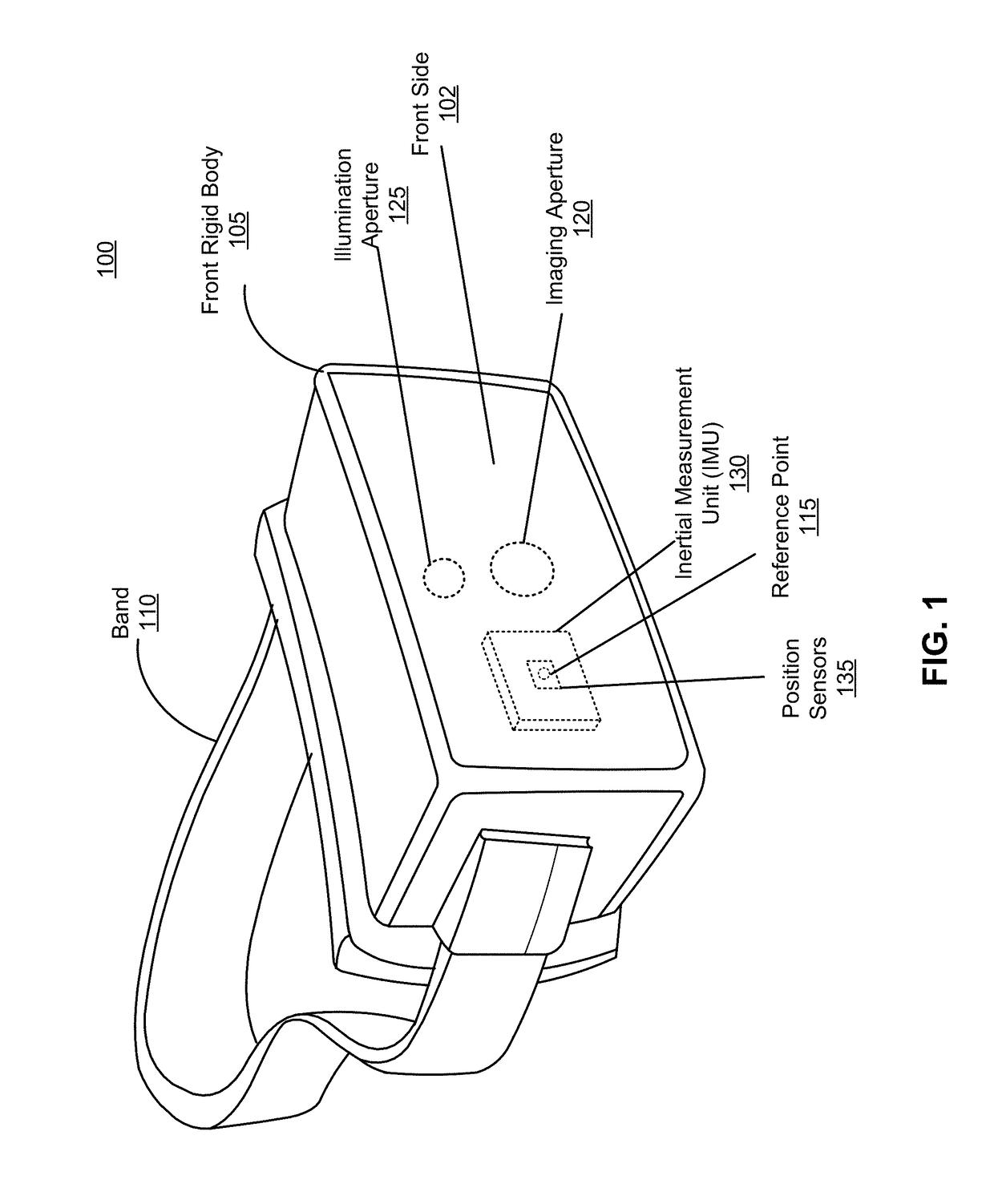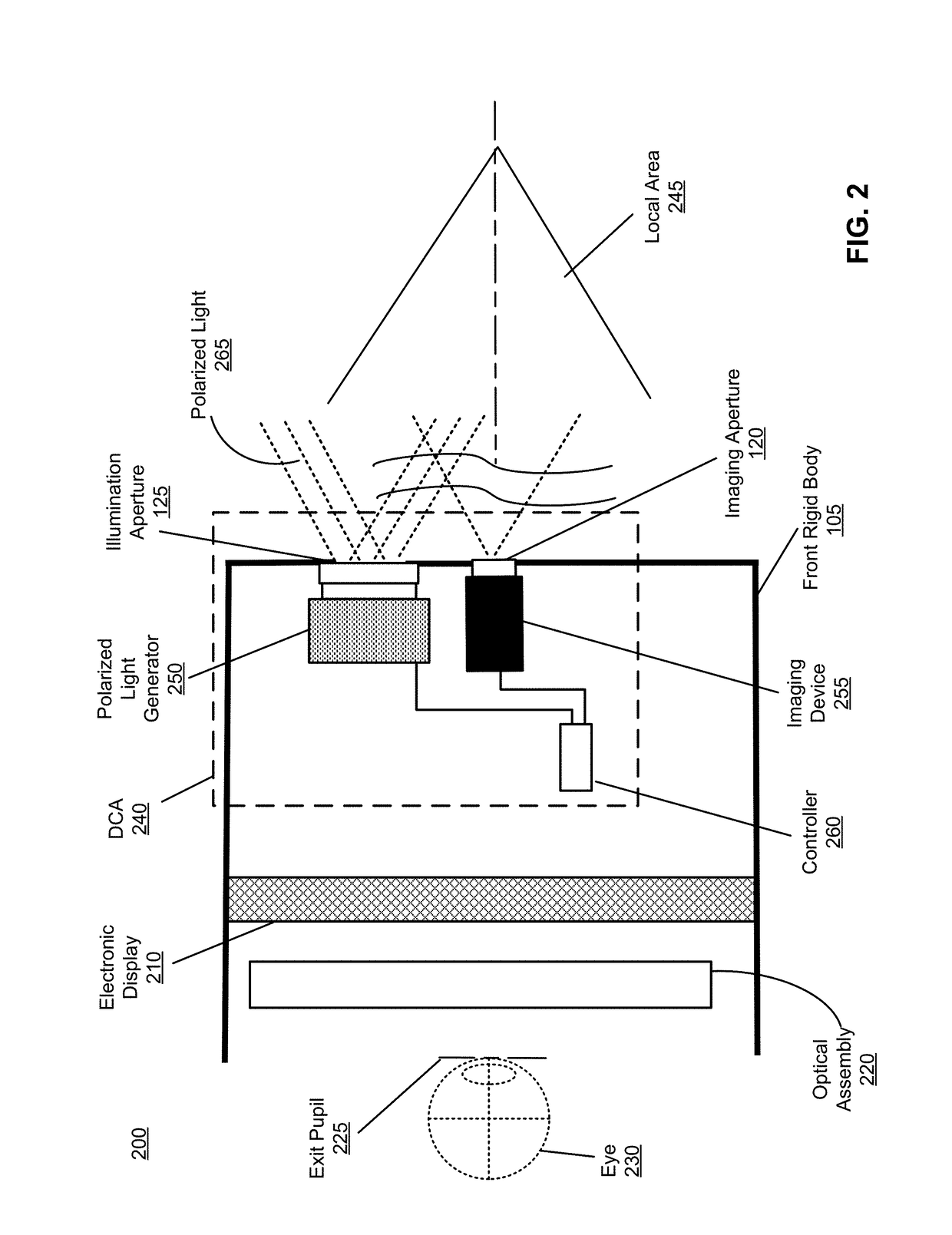Circularly polarized illumination and detection for depth sensing
a circular polarization illumination and depth sensing technology, applied in the field of depth sensing, can solve the problems of low signal-to-noise ratio and large depth errors in depth maps obtained in these environments
- Summary
- Abstract
- Description
- Claims
- Application Information
AI Technical Summary
Benefits of technology
Problems solved by technology
Method used
Image
Examples
Embodiment Construction
[0013]A depth camera assembly (DCA) for determining depth information of objects in a local area surrounding some or all of the DCA. The DCA includes a light source, a camera and a controller. The light source includes a laser source and a modulator that generates light that is, e.g., circularly polarized at a first handedness, using light emitted from the laser source. The light source also projects the generated circularly polarized light into the local area. The camera captures portions of the circularly polarized light reflected from the objects in the local area. The camera is configured as a polarization sensitive camera that detects the reflected circularly polarized light of a second handedness that may be opposite the first handedness. The use of polarized light increases a signal-to-noise ratio (SNR) as an intensity of un-polarized background ambient light can be efficiently reduced at the polarization sensitive camera. The controller determines depth information based on ...
PUM
 Login to View More
Login to View More Abstract
Description
Claims
Application Information
 Login to View More
Login to View More - R&D
- Intellectual Property
- Life Sciences
- Materials
- Tech Scout
- Unparalleled Data Quality
- Higher Quality Content
- 60% Fewer Hallucinations
Browse by: Latest US Patents, China's latest patents, Technical Efficacy Thesaurus, Application Domain, Technology Topic, Popular Technical Reports.
© 2025 PatSnap. All rights reserved.Legal|Privacy policy|Modern Slavery Act Transparency Statement|Sitemap|About US| Contact US: help@patsnap.com



